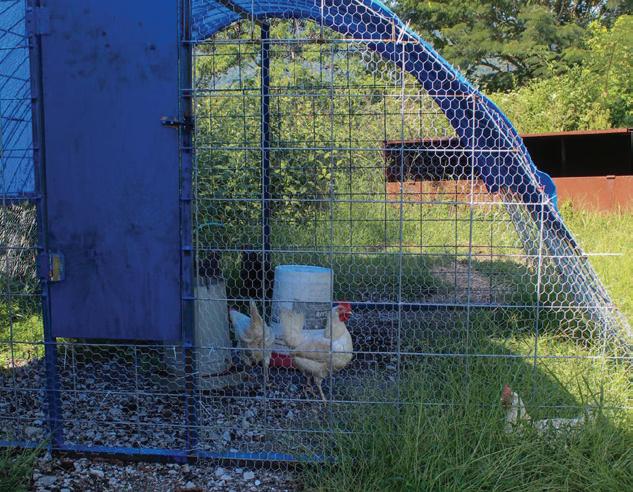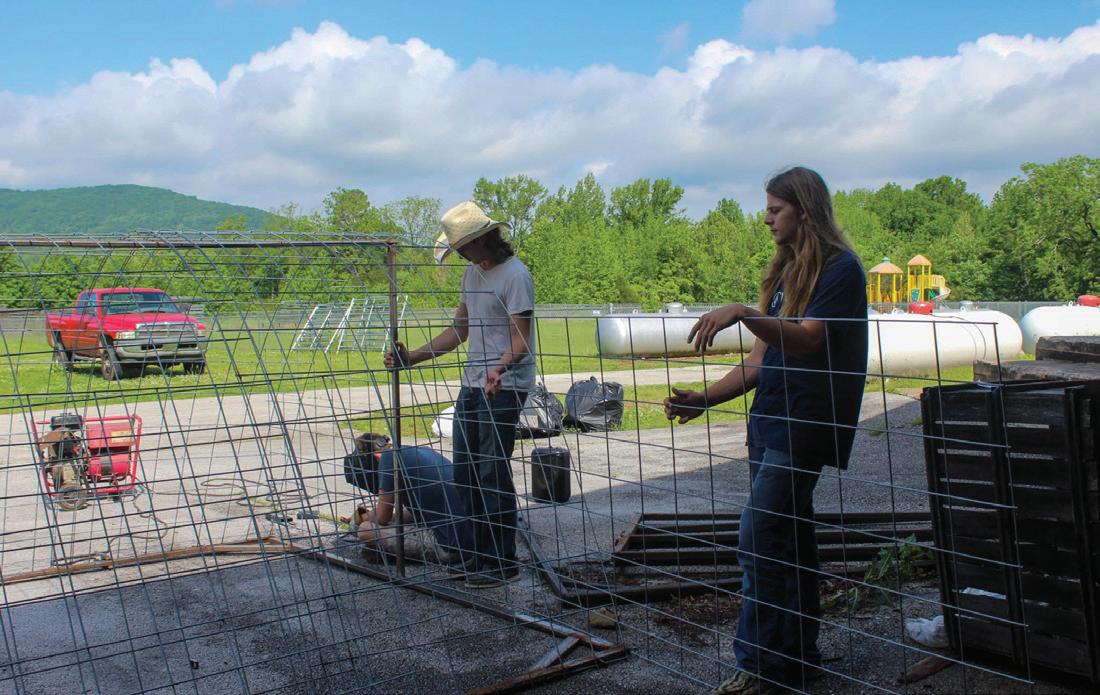Farm Bureau Press



The Arkansas Farm Bureau Foundation Silent Auction will be held Dec. 4–5 at the 2024 ArFB State Convention in Hot Springs. Greenway Equipment is returning as the sponsor of the auction and will be matching proceeds from the event.
ArFB is inviting county Farm Bureaus to donate items to the silent auction with a retail value of $25 or greater. Counties wishing to donate larger items may choose to work with other county Farm Bureaus, groups or agencies. Items unique to the county, local or from a local store are encouraged. Items need to be checked in and ready for bidding by 9:30 a.m., Dec. 4 in the trade show. If a county would like assistance in getting an item to convention in a timely manner, please contact your district director.
Proceeds from the auction are used to further agriculture education in Arkansas, through programs like Ag in the Classroom, grants that are available for educational projects and support of Arkansas FFA and Arkansas 4-H youth programs as well as other efforts supported by the ArFB Foundation.
For questions or additional information, please contact Donette Spann at donette.spann@arfb.com or 501-228-1222.

ArFB advocates for Passage of New Farm Bill, Page 2

Local Farm Bureau Grant Awarded to FFA Chapter, Page 3



Arkansas Farm Bureau Federation has been working diligently with our congressional delegation and congressional leadership to express the urgency of passing a new farm bill as well as a supplemental assistance payment.
Efforts began in August when ArFB guided a coalition of Arkansas organizations in reaching out to the Arkansas delegation, urging immediate action to address the financial pressures facing farmers in 2024. The coalition’s letter highlighted the widening gap between commodity prices and input costs exacerbated by high interest rates, and described the situation for many Arkansas farmers as being at a crisis point in their operations.
On the national level, ArFB has joined a coalition of over 300
The United States Department of Agriculture (USDA) announced today new funding for the Agricultural Conservation Easement Program (ACEP) for fiscal year 2025.
Administered by USDA’s Natural Resources Conservation Service (NRCS), the program helps landowners and other eligible entities conserve, restore and protect wetlands, productive agricultural lands and grasslands at risk of conversion to nongrassland uses. Healthy wetlands, grasslands and farmlands sequester carbon and provide many other natural resource benefits. Funding is made possible by the Inflation Reduction Act.
Interested producers, landowners and partners should apply by the next two ranking dates, Oct. 4, 2024, or Dec. 20, 2024, at their local NRCS office, to be considered for these two state-led funding cycles. In addition, any application submitted to NRCS that was unfunded in fiscal year 2024 will be automatically reconsidered during the Oct. 4 funding cycle.
In fiscal year 2025, states will receive Inflation Reduction Act funding and all eligible applications within a state will compete.
The current ACEP priorities for the Inflation Reduction Act funding are unchanged from last fiscal year and are available in all states. Depending on location, NRCS may also have a state-specific priority. The Inflation Reduction Act funding is in addition to the funding authorized and available under the Farm Bill.
For ACEP-ALE, NRCS is currently prioritizing securing:
• Grasslands in areas of highest risk for conversion to nongrassland uses to prevent the release of soil carbon stores.
• Agricultural lands under threat of conversion to nonagricultural uses.
agriculture organizations from across the country to urge congress to pass a new farm bill, not just an extension of the 2018 bill.
Copies of the letters and lists of stakeholders can be found here
On Sept. 17, Sen. John Boozman provided comments from the Senate floor, urging his colleagues to take action to help American farmers. We are thankful to the Senator for listening to our farmers and ranchers and addressing their needs. We’re in agreement, farmers need a strong and farm-focused farm bill now and it must reflect the challenges of modern agriculture. We support his call for action on emergency assistance that would help family farms. You can learn more about Sen. Boozman’s comments and watch the video here
• State-specific priorities including rice cultivation on subsiding highly organic soils.
For ACEP-WRE, NRCS is currently prioritizing:
• Land with soils high in organic carbon.
• Eligible lands that will be restored to and managed as forests, such as bottomland hardwood forests.
• Eligible lands in existing forest cover that will be managed as forests.
• Several geographically specific priorities (i.e., former cranberry bogs, wet meadows and ephemeral wetlands in grassland ecosystems).
The Inflation Reduction Act included $1.4 billion in additional funding for ACEP over five years and revised ACEP authority, providing funding for easements that will maximize the reduction, capture, avoidance or sequestration of greenhouse gas emissions. The fiscal year 2025 authorized amount for the Inflation Reduction Act funding for ACEP is $500 million.
ACEP is also a covered program in the President’s Justice40 Initiative, which aims to ensure 40% of the overall benefits of certain federal climate, clean energy and other investment areas flow to disadvantaged communities that are marginalized by underinvestment and overburdened by pollution.
NRCS is streamlining ACEP, to ensure that the program is easier and more convenient to utilize, and to strengthen Inflation Reduction Act implementation. Specifically, NRCS is streamlining ACEP appraisals and land surveys, and certifying eligible entities who help NRCS and producers enroll land into agricultural land easements. For more information, see our fact sheet, ACEP and the Inflation Reduction Act.
The Mount Judea FFA Chapter was recently awarded the Food Insecurity Grant by the Newton County Farm Bureau Women’s Leadership Committee. With the funds received, the FFA chapter and other Mount Judea ag students built a chicken coop. This innovative project is making a difference in food insecurity by housing hens that will provide fresh eggs, which will be distributed to local families in need. Beyond its practical benefits, the coop also serves as a hands-on learning experience for students. The project gives students valuable experience in poultry care and sustainable farming practices, which could prepare them for future careers in agriculture.
Keith Perkins, Mount Judea ag teacher and FFA Advisor, said “Mount Judea FFA thanks Farm Bureau for their generous support, which enabled us to build the chicken coop for our students. They learned many things, including blueprint skills, while constructing the chicken coop. Now we have laying hens at school, and the students are able to care for the birds and donate eggs to the local community.”


as of September 18, 2024
Contact Brandy Carroll brandy.carroll@arfb.com
Tyler Oxner tyler.oxner@arfb.com
Arkansas Farm Bureau provides extensive market information and analysis to our members. In addition to bi-weekly analysis available in the Farm Bureau Press, the website provides futures market quotes and charts, cattle market reports, grain cash bids from across the state, news, weather, and more. To receive daily futures prices via text message three times daily and/ or the Weekly Futures Update email that provides in-depth analysis, complete this form to subscribe.
As Hurricane Francine approached, farmers and elevators worked long hours to get as much of the crop harvested as possible. As of Sept. 15, USDA says 68% of the rice crop in Arkansas has been harvested. That’s compared with 56% last week and a 5-year average of 40%. In the monthly WASDE, USDA cut the 2024 production estimate on reduced yields. Average yields are now expected to be 7,588 lb/acre, or approximately 167 bushels/ acre. However, that was more than offset by an increase in beginning stocks and imports and a decrease in domestic use. The net result to the balance sheet was a 2 million cwt increase in ending stocks for 2024/25. The projected average on-farm price for long grain was unchanged at $14.50. November is now the most active contract as traders roll out of September positions. The market has resistance at $15.40 and support near $14.70.
Cotton futures appear to be confirming a bottom as December charted an 8-week high on Monday. However, a stronger dollar and profit-taking resulted in losses on Tuesday. December futures are testing resistance at 73 cents. A close above that level could signal a retest of resistance at 76 cents. In the September WASDE, USDA lowered it’s U.S. crop estimate to 14.51 million bales, down 600,000 bales from the previous month. A cut of 33 lb/ac from the yield estimate was the reason for the reduction. A reduction in exports partially offset the cut, leaving ending stocks down 500,000 bales at 4 million bales. The average onfarm price estimate was unchanged at 66 cents/lb.
In the September report, USDA increased their corn yield estimate to 183.6 bushels per acre, resulting in a crop estimate that was 39 million bushels bigger than last month’s estimate. However, that was more than offset by an increase in old-crop exports and an increase in the ethanol usage estimate. Old crop carryout was lowered to 1.812 billion bushels, and 2024/25 carryout was lowered by 16 million bushels to 2.057 billion bushels. That means the stocks to use ratio in at a 5-year high of 14.5%. That level suggests that the upside of the market will be limited. December corn futures are chopping along mostly sideways below resistance around $4.16. A close above that level would suggest an upside potential of the July highs around $4.20.
The September reports didn’t change much in the soybean market. Old-crop carryout was lowered by 5 million bushels and production was lowered by 3 million bushels, creating little
change to the balance sheet. Carryout for 2024/25 is now pegged at 550 million bushels, with a stocks to use ratio of 12.5%. That is not a bullish situation. Technically, November beans look to have charted a bottom, but that doesn’t mean the upside potential is great. The market first needs to close above $10.311/4, the top of a bearish outside day charted in early September. Failure to negate that bearish chart signal would mean a potential retest of the contract low.
In the monthly supply/demand report, the forecast for 2024 red meat and poultry production was raised. Beef was raised on higher slaughter totals and heavier cattle weights. Broiler production was raised on current slaughter data and hatchery data suggesting more chicks placed in the third and fourth quarters.
Cattle price forecasts were lowered for the second half of 2024 based on recent prices, while broiler prices were raised. Higher egg prices are forecast to carry into 2025 on tight supplies.
The milk production estimates for 2024 and 2025 were lowered on expectations for cow inventories to be smaller and a slower growth rate of milk per cow for the rest of the year. For 2024, forecasts for cheese, butter, nonfat dry milk, and whey were all raised based on strong recent prices and lower milk production. The all-milk price forecast for 2024 was raised to $23.05/cwt. The all-milk price forecast for 2025 was raised to $23.45/cwt.